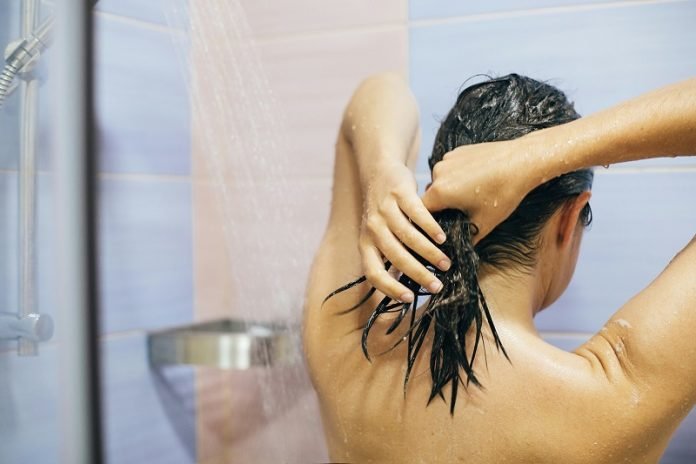
From Barcelona to Mexico City, popular tourist destinations are facing droughts and running out of water.
Yet, a huge 40% of household water is used for showers and baths, with products like shower gel actively encouraging people to spend longer washing so finding simple and scalable ways to cut water consumption is crucial.
Our team of social scientists installed smart sensors in shower cubicles to test how best to encourage people to save water while showering.
This timer device detects when a shower is taking place and updates the person about how long they’ve been showering.
Our new study of more than 17,500 showers from six hotels and youth hostels in Denmark, Spain and the UK compared ways to convince holidaymakers, who had zero incentive to shorten their showers, to do just that.
We found that regular showers (monitored with hidden timers) lasted an average of 297 seconds, or nearly five minutes, and used 38 liters of water.
But smart showers that displayed the shower duration lasted 220 seconds. That’s 25.79% shorter, saving the equivalent of about 10 liters per shower.
Installing smart technology that provides this continuous, real-time feedback during showers reduces showering time.
These timers caught and maintained people’s attention, made them more aware of their water usage and motivated them to take shorter showers.
If people with no incentive can shorten their showers simply by installing a timer that reminds them how long they are spending there, then we expect that the savings in households could be even greater.
In another study, co-authored with sustainable water use expert James Daly and environmental psychologist Ian Walker, we used the same methods to measure more than 86,000 showers for 39 weeks in UK university student halls of residence.
This research found that with middling water pressures our smart device reduced water consumption by up to 43%, saving 25 liters of water per shower. Surprisingly, reducing water pressure doesn’t help save water.
Higher water pressure leads to shorter showers and less water consumption overall, with and without the sensor. That’s because pressure interacts with the flow, so the best combination to reduce water consumption is high pressure and low-flow showers.
Based on our studies of tourists and university students, we found that this smart technology was effective in different contexts and over a long time with the same users.
The tourist water conundrum
Tourists are not financially motivated to save resources because they don’t have to pay separate water bills when staying at a hotel.
They don’t experience peer pressure because showering is a private behavior, and people tend not to be in a hurry while on holiday so a long shower may be more of a treat.
But Tenerife has just declared a drought emergency. Parts of Spain, southern France, most of Italy, Malta, most of Greece and other tourist destinations are also suffering from severe droughts.
All of these places welcome millions of tourists every year, usually in summertime when water availability is at its lowest. In the busiest parts of the Balearic Islands, tourism is responsible for 58% of the total water consumption.
The stark reality is that residents of Tenerife consume 150 liters of water per person per day, while the 6.5 million tourists who visit every year consume between 300 and 400 liters per person per day.
From hotels to halls
The effectiveness of the smart sensor when used in hotels could potentially have been due to its novelty, so we wanted to research an alternative scenario and investigate how best to shorten showers over a long period of time.
University students in UK campuses reportedly have showers of 10–12 minutes, significantly longer than the national average, and they stay on campus for several months.
After using the smart sensor for their first shower, people tend to shower for a similar amount of time for subsequent showers. This suggests people may “anchor” their shower duration to their initial experience.
Adding persuasive messages has some benefit too, but not as much as the timer. The type of sustainability message can increase or decrease people’s engagement so wording needs to be carefully designed based on the science.
The most effective message in shortening showers appealed to people’s personal values, and set an ambitious goal with the words: “Water is essential for life! A typical shower here has water running for three minutes 30 seconds. Will you beat the clock? Water conservation starts with you. Make a difference.”
The shower sensors we used aren’t cheap (they cost around £90 each), so why not safely prop up your phone somewhere in the bathroom and set a countdown, ending with an alarm sound, to see whether you too can beat the clock.
Written by Pablo Pereira-Doel and Xavier Font, The Conversation.



